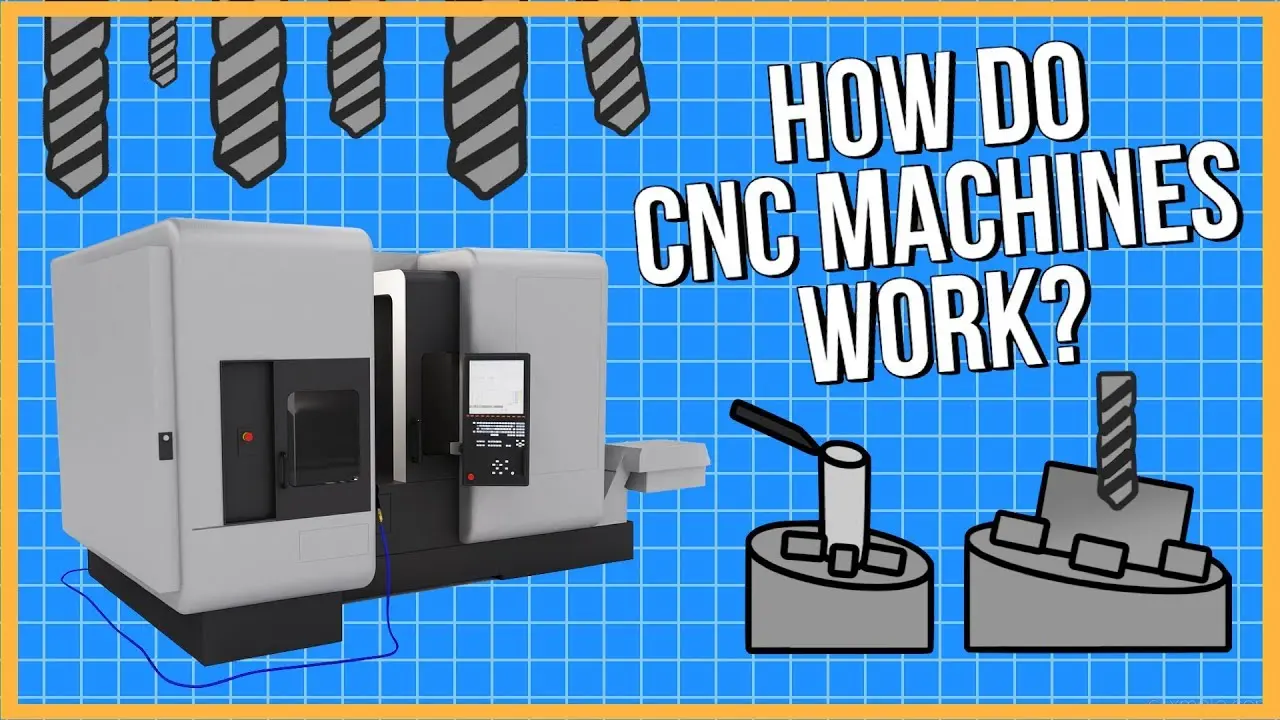CNC machining Complete Engineering Guide

Ready to get your parts machined?
CNC Machining Guide Learn all you need to know about CNC machining in 25 minutes or less. Whether you are an experienced design engineer or just getting started with CNC, this guide is for you.

Part 1: The basics
What is CNC? What types of machines are there? Which are their key benefits & limitations?

Part 2: Design for CNC machining
In less than 15 minutes, you will learn how to design parts optimized for CNC machining.
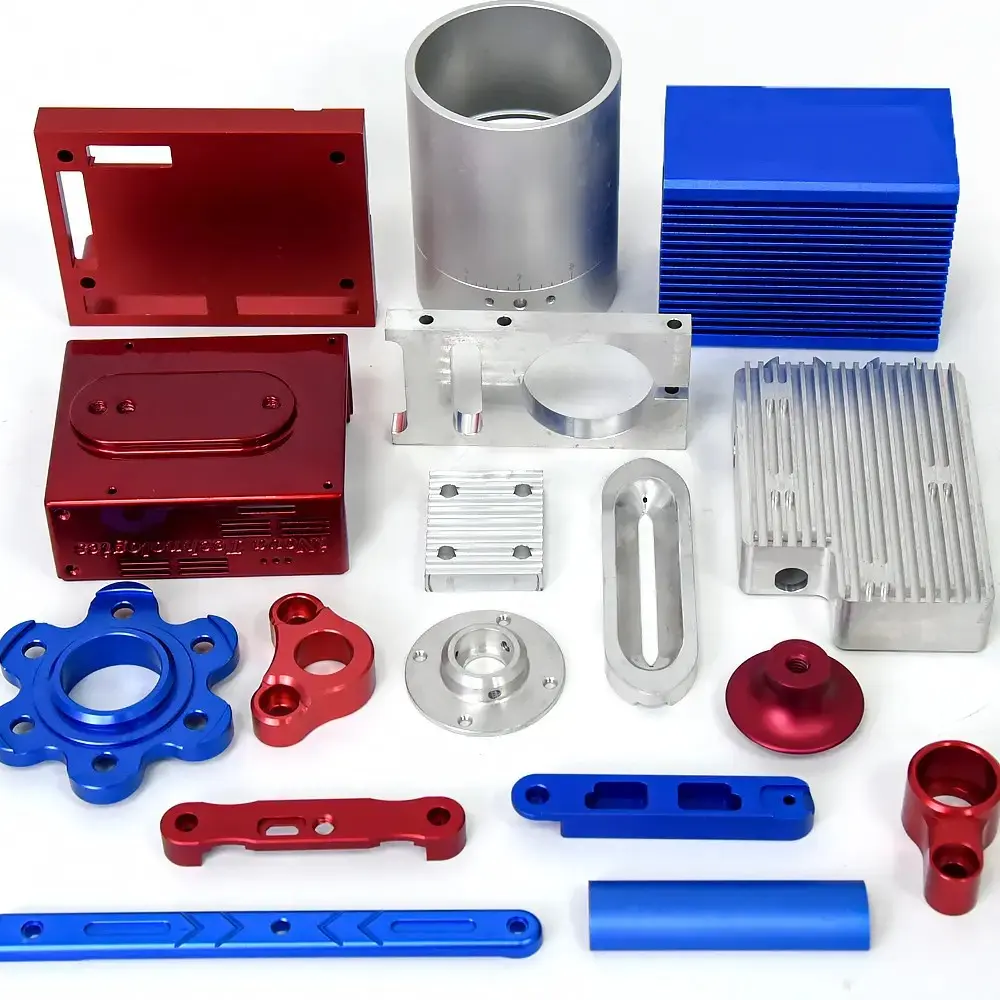
Part 3: Materials for CNC machining
Learn more about the most popular materials & finishes used in CNC machining.

Part 4: Cost reduction tips
Use these 3 design tips to cut the costs of your CNC machining project.
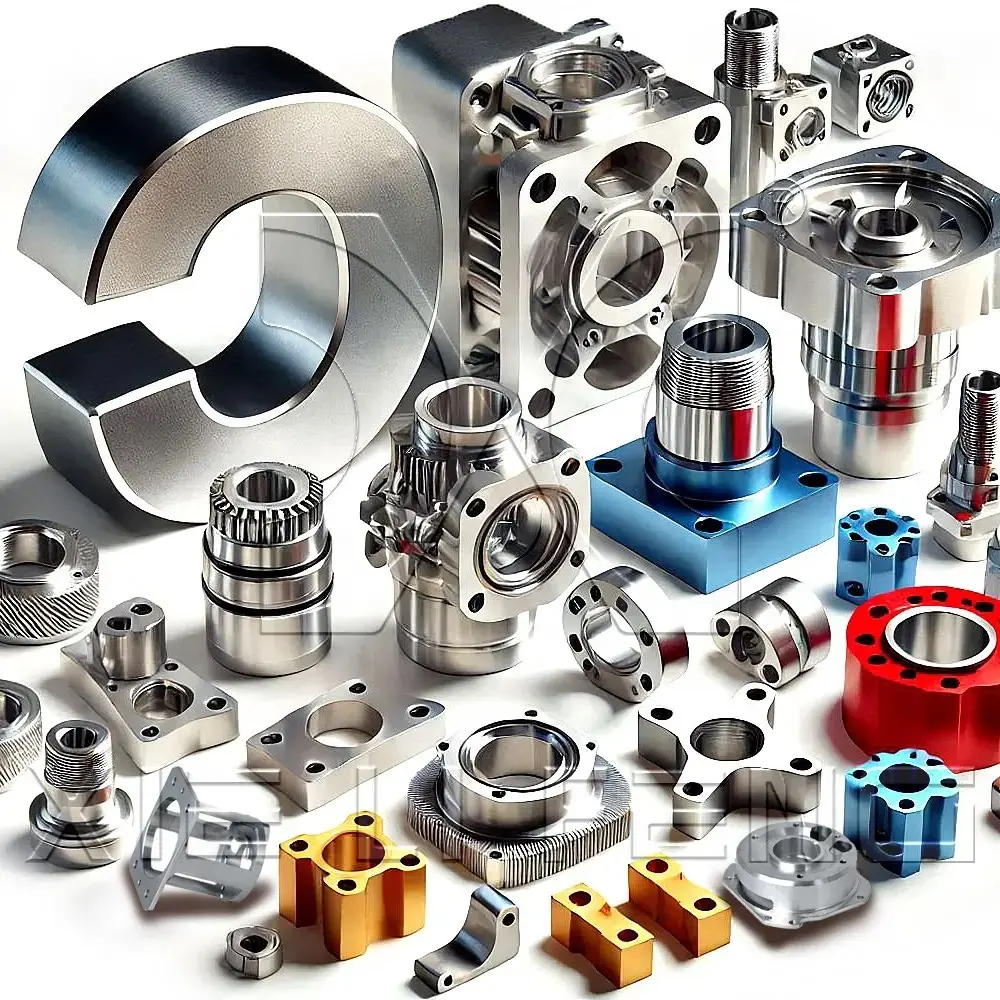
Part 5: Start CNC machining
Learn how to prepare, get a quote & source custom CNC machined parts in 3 simple steps.
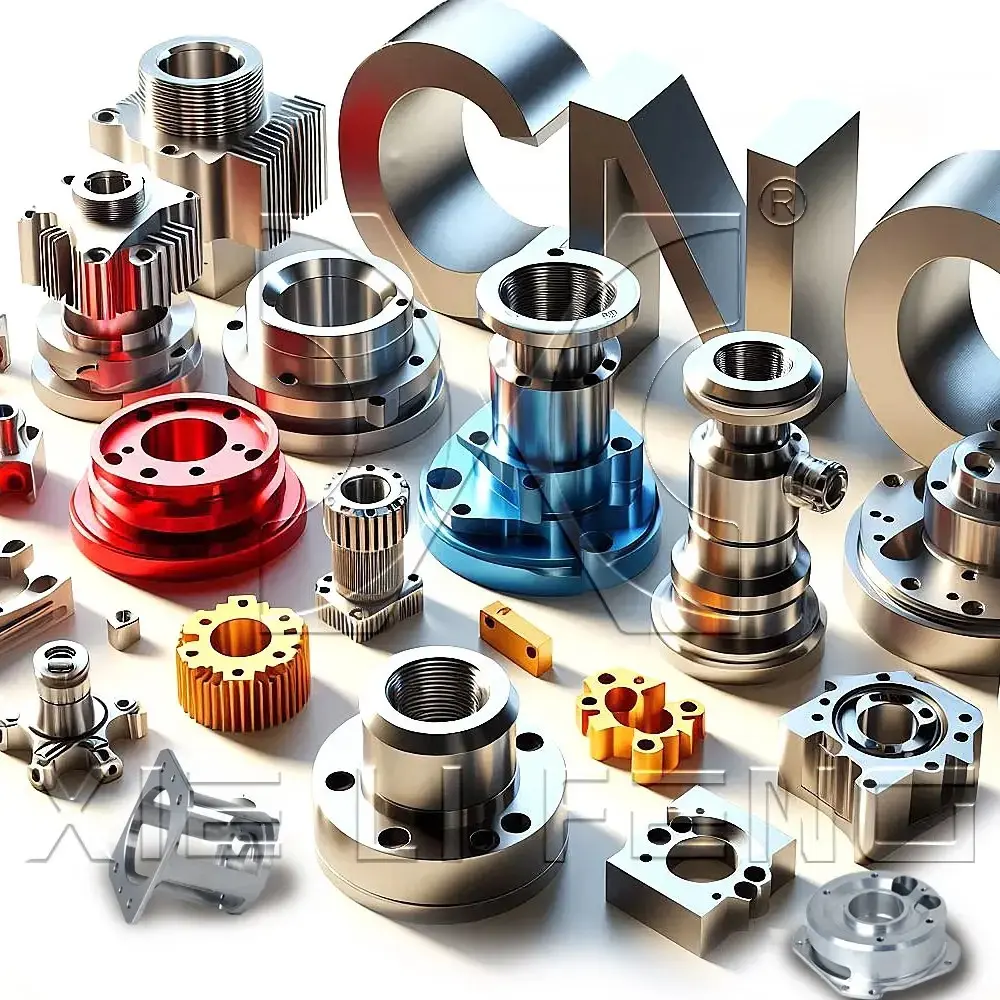
Part 6: Useful resources
Useful resources A list of useful resources for those who want to delve deeper.

Benefits & Limitations of CNC machining
Here’s a list of the key strengths and limitations of CNC machining.
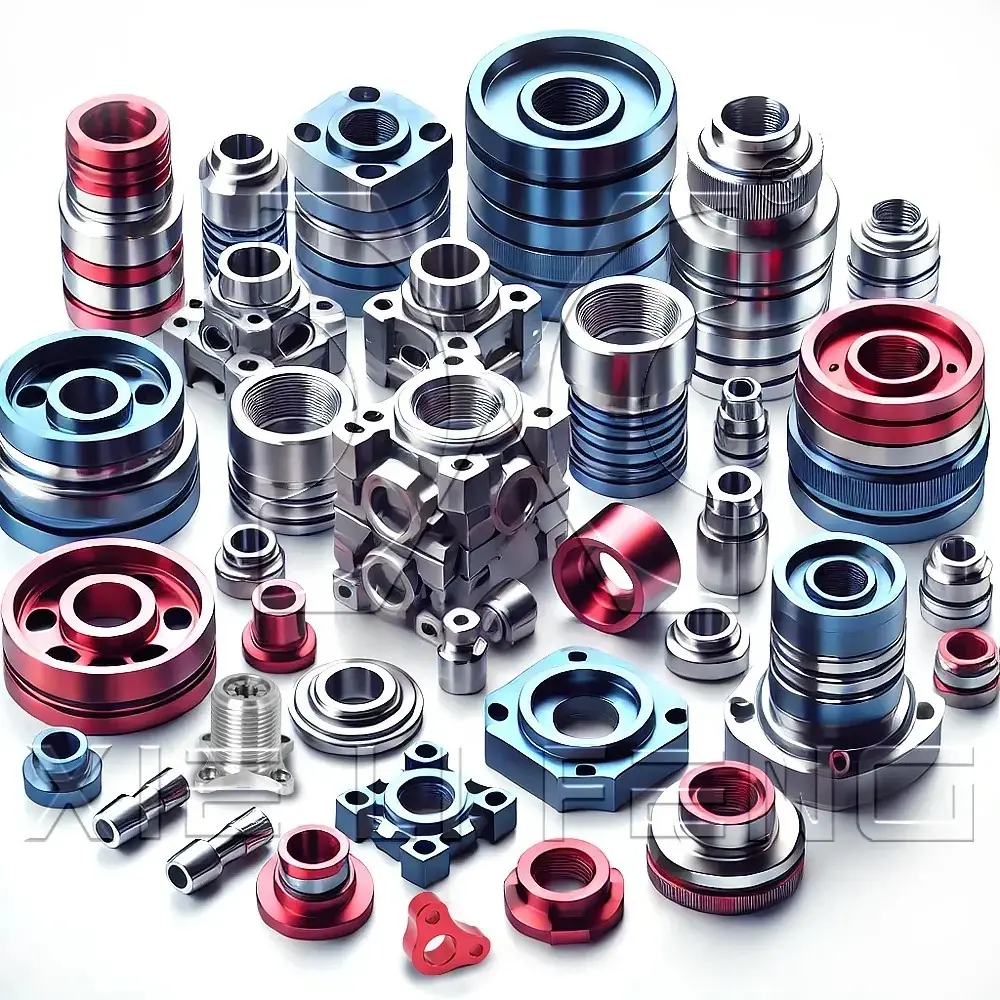
Applications of CNC machining
The benefits of CNC machining lie in a wide range of applications.
SGS Certification
ISO Standards
Environmental Compliance
Customer Satisfaction
Continuous Improvement
Part 1: The basics
What is CNC machining? What are the different types of CNC machines? How do they work?
In this section, we answer all these questions and we compare CNC machining to other manufacturing technologies to help you find the best solution for your application.
What is CNC machining?
CNC (Computer Numerical Control) machining is a subtractive manufacturing technology: parts are created by removing material from a solid block (called the blank or the workpiece) using a variety of cutting tools.
This is a fundamentally different way of manufacturing compared to additive (3D printing) or formative (Injection Molding) technologies. The material removal mechanisms have significant implications on the benefits, limitations and design restrictions of CNC. More on this below.
CNC machining is a digital manufacturing technology: it produces high-accuracy parts with excellent physical properties directly from a CAD file. Due to the high level of automation, CNC is price-competitive for both one-off custom parts and medium-volume productions.
Almost every material can be CNC machined. The most common examples include metals (aluminum and steel alloys, brass etc) and plastics (ABS, Delrin, Nylon etc). Foam, composites and wood can also be machined.
The basic CNC process can be broken down into 3 steps. The engineer first designs the CAD model of the part. The machinist then turns the CAD file into a CNC program (G-code) and sets up the machine. Finally, the CNC system executes all machining operations with little supervision, removing material and creating the part.
A brief history of CNC machining
The earliest machined object ever discovered was a bowl found in Italy and made in 700 B.C. using a lathe.
Attempts to automate machining started in the 18th century. These machines were purely mechanical and powered by steam.
The first programmable machine was developed in the late 40’s in MIT. It used punched cards to encode each movement.
The proliferation of computers in the 50’s and 60’s added the “C” in CNC and radically changed the manufacturing industry.
Today, CNC machines are advanced robotic systems with multi-axis and multi-tooling capabilities.
Types of CNC machines
In this guide, we will focus on CNC machines that remove material using cutting tools. These are the most common and have the widest range of applications. Other CNC machines include laser cutters, plasma cutters and EDM machines.

Providing services using CNC equipment
5 Axis CNC Machining
For complex geometric machining parts, our 5-axis CNC machining service provides unparalleled flexibility and speed.
3 Axis CNC Machining
The high-precision, high-efficiency and high-flexibility processing capabilities can meet the processing requirements of complex shapes and precision.
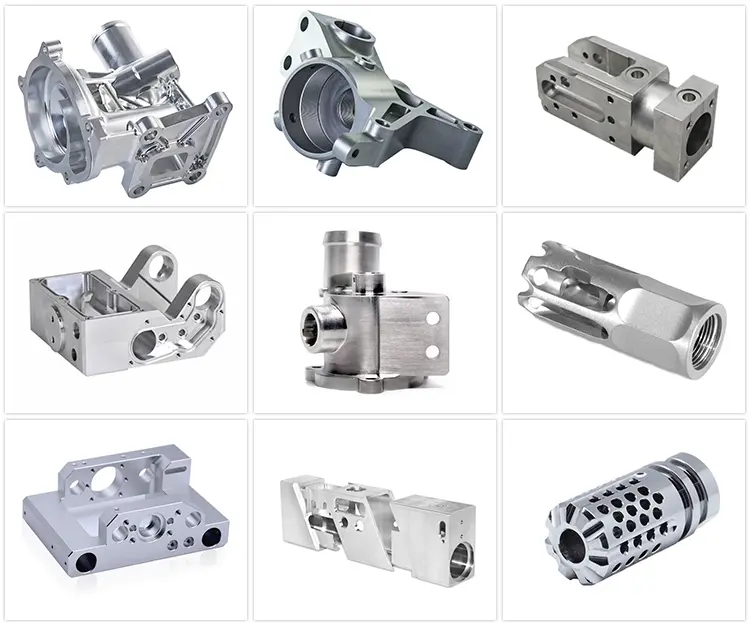
4 Axis CNC Machining
High efficiency, heavy cutting capability, simple operation, high precision and good surface effect.
CNC Milling & Turning
CNC Milling & Turning services that support rapid prototyping design and production needs, High precision, good surface finish and high efficiency.
CNC milling
The workpiece is held stationary directly on the machine bed or in a vice.
Material is removed from the workpiece using cutting tools or drills that rotate at high speed.
The tools are attached to a spindle, which can move along three linear axis.
3-axis CNC machines
CNC milling and CNC turning machines are examples of 3-axis CNC systems. These “basic” machines allow the movement of the cutting tool in three linear axes relative to the workpiece (left-right, back-forth and up-down).
3-axis CNC milling machines are very common, as they can be used to produce most common geometries. They are relatively easy to program and operate, so start-up machining costs are relatively low.
Tool access can be a design restriction in CNC milling. As there are only three axes to work with, certain areas might be impossible to reach. This is not a big issue if the workpiece needs to be rotated just once, but if multiple rotations are needed the labor and machining costs increase fast.
Learn more about CNC milling →
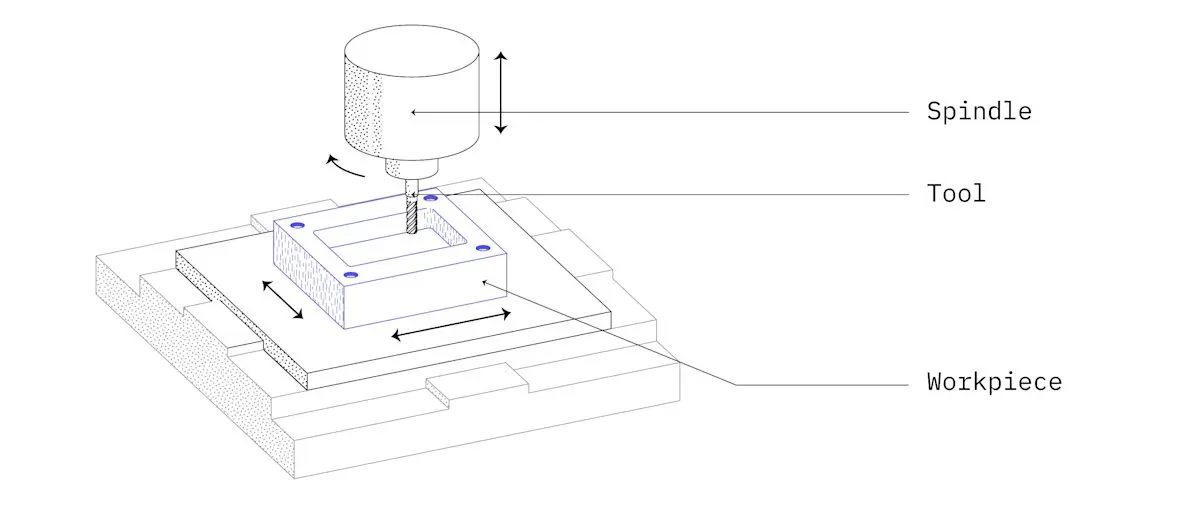
Pros and cons comparison
Can produce most parts with simple geometries.
Tool access & workholding design restrictions apply.
High accuracy & tight tolerances.
Manual repositioning of the workpiece lowers the achievable accuracy.
CNC turning (lathes)
The workpiece is held on the spindle while rotating at high speed.
A cutting tool or center drill traces the outer or inner perimeter of the part, forming the geometry.
The tool does not rotate and moves along polar directions (radially and lengthwise).
Learn more about CNC turning →
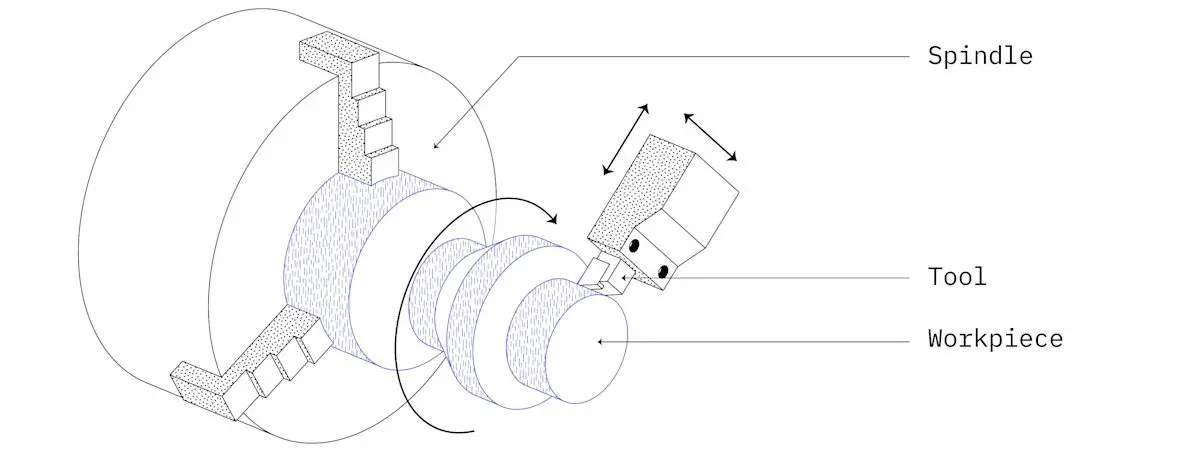
Pros and cons comparison
Lowest cost per part than all other CNC machining operations.
Can only produce parts with rotational symmetry & simple geometries.
Very high production capabilities.
CNC lathe machining comes with size restrictions and may not be able to accommodate very large workpieces.
5-axis CNC machining
Multi-axis CNC machining centers come in three variations: 5-axis indexed CNC milling, continuous 5-axis CNC milling and mill-turning centers with live tooling.
These systems are essentially milling machines or lathes enhanced with additional degrees of freedom. For example, 5-axis CNC milling centers allow the rotation of the machine bed or the toolhead (or both) in addition to the three linear axes of movement.
The advanced capabilities of these machines come at an increased cost. They require both specialized machinery and also operators with expert knowledge. For highly complex or topology optimized metal parts, 3D printing is usually a more suitable option though.
Indexed 5-axis CNC milling
During machining the cutting tool can only move along three linear axis.
Between operations the bed and the toolhead can rotate, giving access to the workpiece from a different angle.
Eliminates the need for manual repositioning.
Produces parts with features that do not align with one of the main axes at a higher accuracy.
Indexed 5-axis CNC milling systems are also known as 3+2 CNC milling machines, since they are using the two additional degrees of freedom only between machining operations to rotate the workpiece.
The key benefit of these systems is that they eliminate the need of manually repositioning the workpiece. This way parts with more complex geometries can be manufactured faster and at higher accuracy than in a 3-axis CNC mill. They lack though the true freeform capabilities of continuous 5-axis CNC machines.
Higher cost than 3-axis CNC machining.
Cannot produce very accurately contoured surfaces.

Continuous 5-axis CNC milling
The cutting tool can move along three linear and two rotational axes relative to the workpiece.
All five axes can move at the same during all machining operations.
Manufactures complex parts at an accuracy that is not possible with any other process.
Produces very smooth 'organic' surfaces with minimal machining marks.
Continuous 5-axis CNC milling systems have a similar machine architecture to indexed 5-axis CNC milling machines. They allow, however, for the movement of all five axes at the same time during all machining operations.
This way, it is possible to produce parts with complex, ‘organic’ geometries that cannot be manufactured at the achieved level of accuracy with any other technology. These advanced capabilities come of course at a high cost, as both expensive machinery and highly-trained machinists are needed.
Highest cost per part of all CNC machining.
Tool access restrictions still apply.

Mill-turning CNC centers
The workpiece is attached to a spindle that can either rotate at high speed (like a lathe) or position it at a precise angle (like a 5-axis CNC mill).
Lathe and milling cutting tools are used to remove material from the workpiece, forming the part.
Lowest cost of all 5-axis CNC machining systems.
High production capabilities & design freedom.
Mill-turning CNC centers are essentially CNC lathe machines equipped with CNC milling tools. A variation of the mill-turning centers are swiss-style lathes, which have typically higher precession.
Mill-turning systems take advantage of both the high productivity of CNC turning and the geometric flexibility of CNC milling. They are ideal for manufacturing parts with ’loose’ rotational symmetry (think camshafts and centrifugal impellers) at a much lower cost than other 5-axis CNC machining systems.
Tool access restrictions still apply.
Most suitable for parts with a cylindrical outline.

To summarize
- 3-axis CNC milling machines manufacture parts with relatively simple geometries with excellent accuracy and at a low cost.
- CNC lathes have the lowest cost per unit, but are only suitable for part geometries with rotational symmetry.
- Indexed 5-axis CNC milling machines manufacture parts with features that do not align with one of the main axes quickly and with very high accuracy.
- Continuous 5-axis CNC milling machines manufacture parts with highly complex, ‘organic’ geometries and smooth contours, but at a high cost.
- Mill-turning CNC centers combine the benefits of CNC turning and CNC milling into a single system to manufacture complex parts at a lower cost than other 5-axis CNC systems.
Use the table below for a rough estimate of the cost per hour of the different CNC machines. The cost is presented relative to that of a 3-axis CNC milling machine, which is typically $75 per hour.
| CNC machine type | Machining cost |
|---|---|
| CNC milling (3-axis) | $75 ( Baseline for comparison ) |
| CNC turning (lathe) | $65 ( – 15% ) |
| Indexed 5-axis CNC milling | $120 ( + 60% ) |
| Continuous 5-axis CNC milling | $150 ( + 100% ) |
| Mill-turning CNC centers | $95 ( + 25% ) |
Benefits & Limitations of CNC machining
Here’s a list of the key strengths and limitations of CNC machining. Use them to help you decide whether it is the right technology for your application.
Benefits of CNC machining
Limitations of CNC machining
Highly accurate parts with tight tolerances
CNC machining can create parts with greater dimensional accuracy than most other common manufacturing technologies. During the final finishing machining steps, material can be removed from the workpiece very accurately, achieving very tight tolerances.
The standard tolerance of any dimension in CNC machining is ± 0.125 mm. Features with tighter tolerance down to ± 0.050 mm can be manufactured and even tolerances of ± 0.025 mm are feasible. That is about a quarter the width of a human hair!
Excellent material properties
CNC machined parts have excellent physical properties, identical to the bulk material. This makes them ideal for applications where high-performance is essential.
Additionally, virtually every common material with enough hardness can be CNC machined. This gives engineers the flexibility to select a material with optimal properties for their application.
Quick turnaround times
The advances of modern CNC systems, CAM software, and digital supply chains have greatly accelerated the production times. Now CNC machined parts are typically ready for delivery within 5 days. This is comparable to the turnaround of industrial 3D printing processes, such as SLS.
One-off custom parts & prototypes
In contrast to formative technologies (Injection Molding), CNC machining does not need any special tooling. So, the on-demand production of custom one-off parts and prototypes is economically viable. This is especially relevant for one-off custom metal parts and prototypes, where CNC is the most cost-competitive solution.
Small-to-medium production
CNC machining is also a very price-competitive option for manufacturing small-to-medium volumes (from 10’s to 100’s). In fact, when ordering 10 identical parts, the unit price is cut by about 70% compared to a one-off part . This is because ’economies of scale’ start to kick in: the relatively high start-up costs of CNC are spread over multiple parts.
In contrast, additive technologies (3D printing) do not scale as well for higher volumes – the unit price is relatively stable. Formative technologies (Injection Molding or Investment Casting) only make economic sense for production volumes in the 1000’s – they have very high start-up costs.
Relatively high start-up costs
In CNC machining, start-up costs are mainly connected to process planning. This step requires manual input from an expert, so start-up costs are usually relatively high when compared, for example, to 3D printing, where process planning is highly automated. They are still much lower than formative manufacturing processes though (Injection Molding or Investment Casting), which require the preparation of custom tooling.
It is important to keep in mind that start-up costs are fixed. There is an opportunity to significantly reduce the unit price per part by taking advantage of ’economies of scale’, as we saw above.
Geometric complexity has a high cost
Being a subtractive technology, machining complex geometries come at an increased cost. It is also restricted by the mechanics of the cutting process. Parts with complex geometry either require the use of a multi-axis CNC machining system or manual labor from the machinist (repositioning, realigning etc).
To help you keep the price of CNC machined parts to a minimum, we’ve compiled a list of design tips.
Tool access and workholding restrictions
Since a part is produced by removing material from a solid block, a cutting tool with a suitable geometry must exist. It should also be able to access all necessary surfaces. For this reason parts with internal geometries or very steep undercuts (for example) cannot be machined.
Holding the workpiece securely in place is essential for CNC machining and introduces certain design limitation. Improper workholding or a workpiece with low stiffness can lead to vibrations during machining. This results to parts with lower dimensional accuracy. Complex geometries might require custom jigs or fixtures.
Applications of CNC machining
One of the greatest things about CNC machining is the wide range of applications it has found over the years.
Here, we collected some recent examples to illustrate how professionals have exploited the benefits of CNC machining to get the best results in different industrial situations. Use them as inspiration for your projects.
- Space
- Aerospace
- Automotive
- Medical Devices
- Robotics
- Design
- Electrical
- Industrial
- Sports
Space
CNC machining is one of the very few manufacturing processes that is suitable for creating parts for space applications. Not only because of CNC parts have excellent accuracy and material properties, but also due to the wide range of surface treatments that can be applied to the parts after machining.
For example, KEPLER used CNC machining and space grade materials to go from a sketch on a napkin to a satellite in space in 12 months.
At GreatLight, our reliable rapid prototyping services have served many customers representing different phases of the aerospace industry over a decade. We can quickly create aerospace part prototypes and our production systems can produce parts in small, batch, or large-scale quantities with high quality standards and affordable price.
Production-grade products
ISO 9001:2015 certified
24/7 engineering support

Aerospace
Aerospace was one of the first industries to use CNC machining. This is due to its ability to manufacture lightweight parts with excellent physical properties and very tight tolerances. CNC machining is used both for aircraft parts and also during the development stages.
For example, Tomas Sinnige is a PhD researcher at the Delft University of Technology. With his team of researchers, they used CNC machining to manufacture scaled-down versions of their prototype engine, aiming to increase the efficiency of modern propeller engines.
We have many years of experience and knowledge in manufacturing parts for a variety of industries, including the aerospace sector. This means we understand the specifications required by the industry and the importance of ensuring all parts are accurate and of the highest quality.
Production-grade products
ISO 9001:2015 certified
24/7 engineering support

Automotive
CNC machining has applications in the automotive industry when manufacturing of high-performance custom parts is required.
For example, the Dutch company PAL-V, designs Personal Air and Land Vehicles. These are essentially the world’s first flying cars. During the development stages, they chose CNC machining to prototype and manufacture key components.
Get high-quality manufacturing services for your custom automotive prototypes and production parts. Launch products faster, reduce risks, and streamline production processes with on-demand production at competitive prices.
Production-grade products
ISO 9001:2015 certified
24/7 engineering support

Medical Devices
With the improvement of medical devices and technology, pharmaceutical equipment updates and upgrades as well. Once the appearance and model designed, you have to make rapid prototypings to verify the feasibility of your idea.
The main difficulty in medical industry is the materials hard to machine, complex shapes and the extremely high demand for precision. GL is equipped with 5-axis, 4-axis and 3-axis CNC machining centers which can meet your demand perfectly.
We offer reliable rapid prototyping and rapid manufacturing solutions crafted to suit the needs of the medical device industry. Regardless of our project load, our customers can rest assured that we will deliver high quality, precision products on time and at affordable rates.
Production-grade products
ISO 9001:2015 certified
24/7 engineering support

Medical Devices
With the improvement of medical devices and technology, pharmaceutical equipment updates and upgrades as well. Once the appearance and model designed, you have to make rapid prototypings to verify the feasibility of your idea.
The main difficulty in medical industry is the materials hard to machine, complex shapes and the extremely high demand for precision. GL is equipped with 5-axis, 4-axis and 3-axis CNC machining centers which can meet your demand perfectly.
We offer reliable rapid prototyping and rapid manufacturing solutions crafted to suit the needs of the medical device industry. Regardless of our project load, our customers can rest assured that we will deliver high quality, precision products on time and at affordable rates.
Production-grade products
ISO 9001:2015 certified
24/7 engineering support

Product Design & Development
The ability of manufacture quickly custom metal parts with great dimensional accuracy, makes CNC machining an attractive option for producing functional prototypes. This is essential during later stages of design and development.
The design team for instance, used CNC machining to prototype their professional Augmented Reality (AR) hardware. They selected this process, as it was the most cost-competitive solution that was capable of producing custom metal parts with the required level of detail and at the small-scale needed for their designs.
Design, Fabrication, Engineering. Forget “one size fits all.” Get engineering solutions, CNC machining and functional prototyping tailored to your needs.
Production-grade products
ISO 9001:2015 certified
24/7 engineering support

Electrical & electronic manufacturing
CNC machining has many applications in the electrical and electronic manufacturing industry: from the prototyping of PCBs to the manufacturing of enclosures.
TPAC, for example, used CNC machining to manufacture an enclosure for their high-power electronic sensing systems. Heat dissipation and electrical insulation were the main design requirements in this case. So, CNC machined anodized aluminum was ideal for their one-off custom enclosure.
Get your electronics product to market faster with high-quality new product development for the electronics industry. From rapid prototyping to on-demand production, here’s a chance to streamline electronic product development at competitive pricing.
Production-grade products
ISO 9001:2015 certified
24/7 engineering support

Tooling & Industrial manufacturing
A very common industrial application of CNC machining is the fabrication of tooling for other processes. For example, the molds in Injection Molding are commonly CNC machined from aluminum or tool steel.
GreatLight, for instance, developed a system for the developing world that turns waste plastic into iPhone cases! For this purpose, they used a low-cost manual injection molder and custom CNC machined molds.
GreatLight provides precision machining, CNC workholding, and robotic automation solutions, optimizing manufacturing efficiency for 15+ years.
Production-grade products
ISO 9001:2015 certified
24/7 engineering support

Sports & motorsports equipment
High-performance sports & motorsports manufacturers always try to increase the performance of their products by reducing their weight.
CAKE is a Swedish company that designed and developed the first off-road electric motorbike. Since it is the first of its kind, every single component of the motorbike was custom-made with CNC to achieve the intended level of quality and durability.
GreatLight CNC specializes in Precise Reverse Engineering of Racing Cylinder Head Ports and Chambers and the precise machining of Master Model Details.
Production-grade products
ISO 9001:2015 certified
24/7 engineering support

Here’s a list of the key strengths and limitations of CNC machining. Use them to help you decide whether it is the right technology for your application.
CNC machining vs. 3D printing
CNC offers greater dimensional accuracy and produces parts with better mechanical properties than 3D printing, but this usually comes at a higher cost for low volumes and with more design restrictions.
CNC machining
3D printing
When to Choose CNC Machining
CNC machining is typically the best choice when:
- Your design features simple geometries
- You need high mechanical strength and thermal performance
- Tight dimensional tolerances are required
- Cost efficiency is important for small-to-medium production runs
- Machining metals like aluminum, stainless steel, or titanium yields strong, high-precision components—ideal for structural parts that don’t require intricate forms.
- CNC machining of critical features (e.g. mounting holes, sealing faces) to exacting tolerances
This approach balances design complexity, functional performance, and manufacturing precision, making it ideal for mission-critical components.
When to Choose 3D Printing:
3D printing is the ideal solution in the following scenarios:
- Complex geometries: Parts with intricate designs, lattice structures, or topology-optimized features that are difficult or impossible to machine.
- Rapid turnaround: Need parts fast? 3D printing can deliver prototypes within 24 hours.
- Lower cost for small volumes: Additive manufacturing is typically more affordable than CNC for quantities under 10 units.
- Specialty materials: Some materials, like flexible TPU or high-performance metal superalloys, are better suited to 3D printing than machining.
- Budget constraints: When cost-efficiency is key, 3D printing offers a lower barrier to entry due to minimal setup costs and no tooling requirements.
- For high-volume production—hundreds to thousands of parts—neither CNC machining nor 3D printing may be the most cost-effective option. Often, injection molding or other traditional forming technologies offer the best economies of scale.
It depends on your needs. CNC machining is better for parts requiring precision, smooth surfaces, and tight tolerances. 3D printing is ideal for complex geometries and rapid prototyping, with quality varying by printer type. Choose based on material, geometry, and production volume.
Scaling up production
If high volumes are needed (1,000’s or more), neither CNC machining nor 3D printing are likely to be suitable options. In these cases, forming technologies, such as investment casting or injection molding, are more economically viable due to the mechanisms of economies of scale.
| No. of Parts | Plastic | Metal |
|---|---|---|
| 1-10 | 3D printing | CNC machining (consider 3D printing) |
| 10-100 | 3D printing and CNC machining | CNC machining |
| 100-1000 | CNC machining (consider Injection molding) | CNC machining (consider Investment casting) |
| 1000+ | Injection molding | Investment or Die casting |
For quick reference, use the table below. In this simplification, it is assumed that all technologies are able to produce the geometry of the part in question. When this is not the case, 3D printing is generally the preferred method of manufacturing.
Have questions?
Feel free to discuss CNC machining with us.
In less than 15 minutes, you will learn all you need to know to design parts optimized for CNC machining: from Design for Machinability rules to cost reduction tips and from material selection guidelines to surface finishing recommendations.
